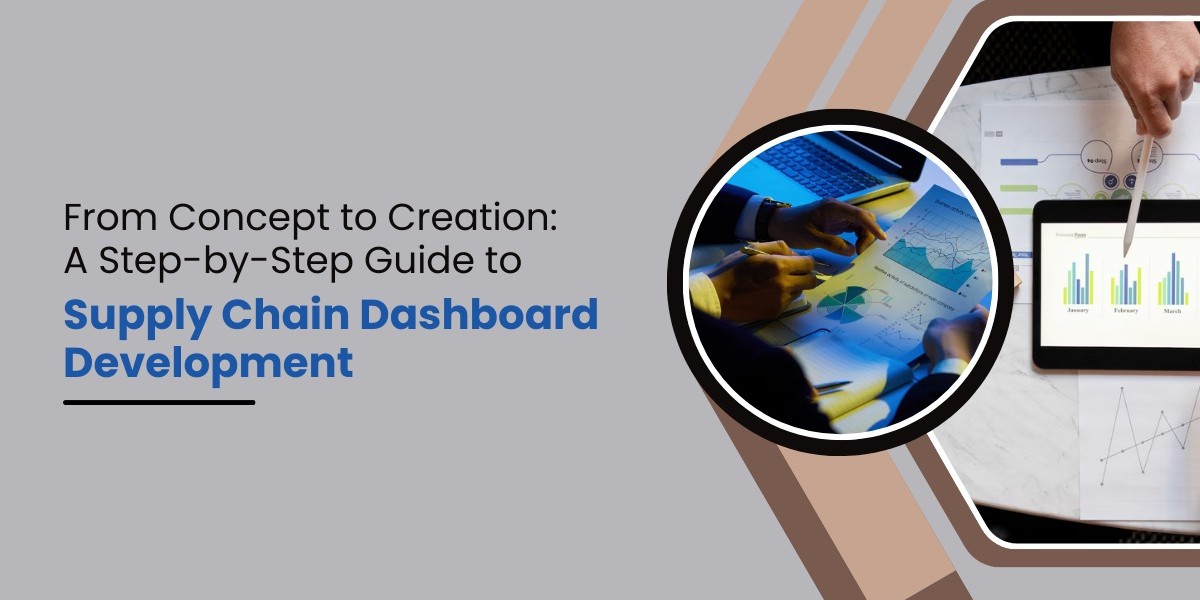Supply chains are becoming more complex due to globalization, changing consumer expectations, and volatile markets. To keep up, companies are turning to data analytics and dashboard tools. A well-designed supply chain dashboard helps companies improve visibility, reduce risk, and make faster, more accurate decisions.
According to a 2024 report by World Metrics, 68% of companies using supply chain dashboards reported improved operational visibility, while 59% stated that real-time analytics helped them make better decisions.
Understanding the Role of Dashboards in Supply Chain Management
A supply chain dashboard is an interactive visual interface that displays data related to supply chain operations. It allows users to monitor key activities such as order status, inventory levels, supplier performance, and logistics metrics in real time. These dashboards help supply chain professionals detect inefficiencies, predict potential disruptions, and respond quickly to changing conditions.
Dashboards can serve different roles depending on the level of the user. Operational users might monitor shipment delays or warehouse capacity. Managers might track overall logistics costs or order fulfillment performance. Executives may focus on strategic indicators such as customer satisfaction trends or global supply risks. All these needs must be considered during the development process.
Setting Clear Objectives and KPIs
Before development starts, the first step is to define what the dashboard should accomplish. Objectives should be aligned with the organization’s business goals. Whether the goal is to reduce lead times, improve delivery accuracy, or lower logistics costs, clear expectations help guide the design and data requirements.
Once the objectives are in place, relevant KPIs must be identified. These could include on-time delivery rates, inventory turnover, cycle times, and perfect order rates. KPIs should be measurable, actionable, and directly linked to operational and strategic outcomes. Choosing the right metrics is critical. Measuring the wrong indicators can mislead decision-makers and result in wasted resources.
In many projects, stakeholders from various departments procurement, logistics, sales, and IT are brought together to define the goals and metrics. This collaboration ensures the dashboard meets the needs of all users and supports integrated decision-making.
Data Collection and Integration
Data is the foundation of any dashboard. In supply chain dashboard development, this stage is often the most technically challenging. Most organizations use a mix of systems such as ERP, WMS, TMS, and CRM platforms. These systems store data in different formats and structures.
A retail company that integrated real-time inventory, supplier delivery times, and sales order data was able to reduce stockouts by 25% within three months. This result was achieved because their dashboard provided up-to-the-minute visibility across their entire supply chain network.
Dashboard Design and User Experience
Once the data layer is ready, the focus shifts to dashboard design. A successful dashboard should be intuitive, visually clear, and tailored to its audience. The goal is not just to show data, but to present it in a way that supports quick, informed decisions.
Avoid overcrowding the interface with too many charts or raw numbers. Instead, present a hierarchy of information where summary KPIs are visible first, and users can drill down into details as needed. This approach keeps the dashboard focused while offering depth when required.
Implementation and Testing
After design is completed, the dashboard must be implemented in a live environment. This involves deploying the software, connecting to production data sources, and configuring access for users. Before a full rollout, rigorous testing is needed.
User Acceptance Testing (UAT) is the final step before launch. In this phase, end users validate that the dashboard meets the original requirements and performs as expected in real-world conditions.
Training and Rollout
Even the best dashboard is ineffective if users don’t know how to use it properly. Training is an essential part of supply chain management dashboard development. Training programs should be customized to the different user roles and should cover key features, navigation, data definitions, and troubleshooting steps.
Ongoing support is also necessary. Help desks, FAQs, and internal champions can help resolve user issues quickly and encourage wider adoption across teams. A successful rollout combines technical readiness with cultural acceptance, and strong training plays a central role in both.
Also Read: How Data Analytics Optimizes Supply Chain Operations
Continuous Improvement and Maintenance
Dashboards are not static tools. As business priorities change, new KPIs may emerge, or new systems may need to be integrated. Therefore, maintaining and improving the dashboard over time is just as important as its initial launch.
System performance should also be monitored. Slow loading times, data mismatches, or broken visualizations should trigger maintenance reviews. Keeping the dashboard responsive and accurate ensures its long-term value.
For example, a logistics firm that reviewed its dashboard quarterly was able to respond faster to market changes and supplier disruptions. Over a year, they reduced emergency shipment costs by 12% just by improving response times through updated alerts and real-time tracking.
Common Challenges and How to Address Them
One frequent challenge is dealing with fragmented data sources. When data is stored in isolated systems, integration becomes difficult. The solution is to build a centralized data warehouse or lake, where all supply chain data is standardized and easily accessible.
Another issue is user resistance. People may be hesitant to adopt new tools if they don’t understand the benefits. Clear communication, training, and involving users in the development process can reduce this resistance.
Finally, some companies build dashboards without a clear purpose, leading to underuse. To prevent this, development should always begin with defined objectives and direct input from end users.
Conclusion
Supply Chain Dashboard Development is a complex but necessary investment in today's data-driven economy. When done correctly, it brings visibility, speed, and accuracy to decision-making across procurement, logistics, warehousing, and sales.
From setting goals and integrating data to designing interfaces and training users, each step of the development process must be handled with care and precision. The technical aspects such as architecture, data pipelines, and security are just as important as user experience and adoption.






